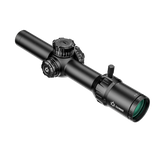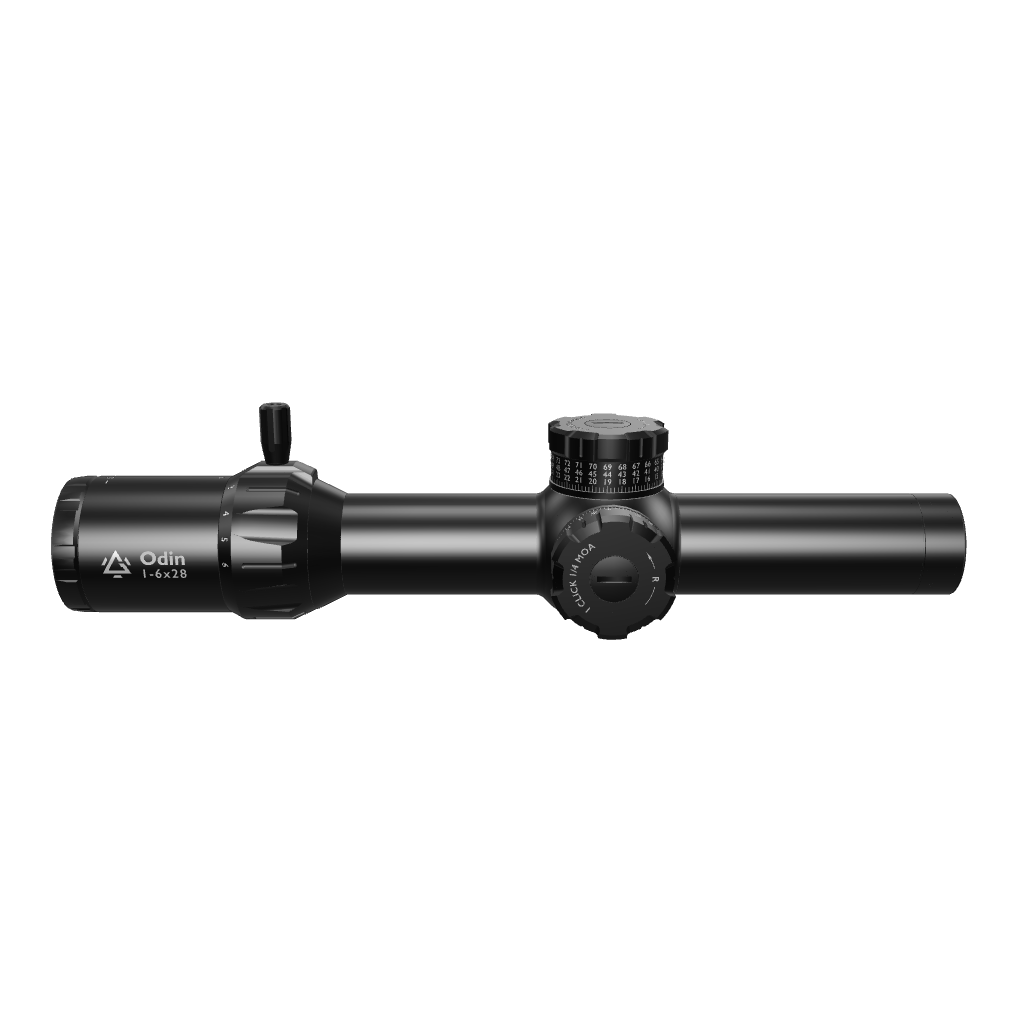7 Common Myths About Optics
When it comes to rifle optics, there’s no shortage of advice, opinions, and strong beliefs-but not all of them are true. Over the years, a number of myths have spread among shooters, from the idea that more expensive optics automatically mean better accuracy to the belief that all scopes perform the same in low light.
The problem with these misconceptions is that they usually sound logically correct, and may have some sprinkles of truth in them, but can lead to poor gear choices, wasted money, and even frustration at the range or in the field.
In this blog, we’ll clear up some of the most common myths about optics so you can separate fact from fiction and choose the right glass with confidence.
1. A Bigger Tube Means More Light
One of the most widespread beliefs is that a larger tube diameter means more light transmission. At face value, it seems logical: more space should allow more light in, right? But that’s not how optics work.
The tube size is about mechanical travel (how much elevation adjustment you have), not brightness. In other words, the main benefit of a larger tube diameter is that it allows more space for internal adjustment: it does not necessarily translate to better light transmission.
If you want more light gathering, you need a larger objective lens, not a fatter tube. The front glass determines how much light enters, while coatings and glass quality dictate how well it’s transmitted.
A 34mm tube will not magically brighten your image (compared, for example, to a 30mm tube): it just gives you more adjustment range and, often, more weight.
For a short illustration of this point, consider the tube diameter of Gunnr's three ODIN LPVOs:
| LPVO Model | Tube Diameter |
| 1-6x FFP LPVO | 34mm |
| 1-8x FFP LPVO | 30mm |
| 1-10x FFP LPVO | 34mm |
The point here is, when you have good quality glass, it doesn't really matter whether you are using a 34mm or 30 mm tube.
What really matters for these LPVOs (as far as image quality and brightness are concerned) is that they have lenses made of Extra Low Dispersion (ED) glass from German SCHOTT with advanced fully multi-layer coatings and anti-reflective layers to reflect glare and boost light transmission for a brighter, clearer sight.
2. Christmas Tree Reticles Are ALWAYS Better
The “Christmas tree” style reticle, with its array of dots and hashes, has a strong reputation among long-range shooters. The idea is that you can quickly hold for both elevation and windage without touching your turrets. On paper, it looks like a shortcut to precision.
But in practice, relying too heavily on this design can backfire. Holding outside the optical centre introduces distortion, especially at steep angles or when light refracts across the lens. This can cause serious misses. For consistent precision, especially at distance, dialling elevation and holding only for wind is usually the better method.
Again, the argument is not that the Christmas Tree style reticle does not help; it actually does. The point is, do not be starry-eyed about it: it demands a lot of precision to use, and you probably should not use it all the time. Sometimes, dialling manually is more practical, especially for consistency.
3. Cheap Rings Are Just As Good
Many shooters get sticker shock when they see the price difference between $20 scope rings and $150 ones. To the untrained eye, they look almost identical. But the difference shows up in durability, repeatability, and alignment.
The problem with cheap rings is that they are more likely to shift under recoil, rust quickly, or apply uneven pressure that damages your scope’s internals. There are all risks that you might not realize until it is already too late.
Quality rings, when installed with a torque wrench, keep your zero stable even after rough use or environmental changes. They aren’t an accessory to cheap out on - poor rings can turn a premium optic into a frustrating liability.
The point is, as much as you can, go for good-quality scope rings, even if it means you have to spend some extra bucks. In the long run, they will be worth it.
4. MOA Is More Precise than MILs, So It’s ALWAYS Better
One click of MOA is technically finer than one click of a mil, and that is a fact. However, the problem is that this is often touted as proof that MOA is superior to MIL. But long-range shooters overwhelmingly prefer mils, and for good reason.
- MIL is practical and easier to use for many shooters. MILs align better with the metric system and make range calculations simpler.
- More importantly, serious shooters tend to speak the same language, and that language is MIL.
MOA isn’t useless-it’s familiar to many hunters – but calling it “better” ignores the bigger picture. Precision isn’t just about numbers; it’s about usability and consistency across the shooting community.
Explore more on MIL vs MOA
5. More Money Always Buys More Accuracy
There’s a common assumption that the higher the price tag, the sharper and more reliable the scope. That is not necessarily true, especially in the context of modern technology.
The difference in prices between optics generally comes down to glass quality, and while premium European glass does have advantages, modern manufacturing has closed the gap dramatically. Today, a mid-priced optic can deliver excellent clarity, solid tracking, and rugged performance.
Moreover, spending thousands on a scope you don’t understand can actually be wasteful. Many shooters would be better off with a $700 optic and putting the rest of their budget into training. Expensive glass has its place, but buying based on prestige rather than need is one of the fastest ways to burn money in this sport.
The point is:
- You will not become a better shooter just because you have a $3,000 optic. You still need to train and learn the game.
- Don't break your bank for a sophisticated optic under the illusion that it will make you a better shooter. You can learn just as much, and just as fast, with a decent, affordable model.
Consider these tactical scopes under $1,000 if you are on a budget.
Why Scope Training Beats Scope Shopping
The hard truth is that gear often gets more credit than skill. Many shooters obsess over features and specs but don’t know how to use what they already own. Training makes far more of a difference than brand names or cosmetic upgrades.
A moderately priced scope in the hands of a skilled marksman will outperform a $3,000 optic in the hands of someone who doesn’t understand the basics like elevation and windage, or parallax.
Investing in a torque wrench, learning to mount optics properly, and practicing real-world adjustments will take your accuracy further than a bigger shopping budget ever will.
So, be patient and master the fundamentals. There are no shortcuts.
6. All Exposed Turrets Track Perfectly
Exposed turrets look tactical, and shooters assume that if each click is labeled as 0.25 MOA or 0.1 mil, the adjustments are dead-on. Unfortunately, not all turrets are created equal. Lower-end scopes often fail to track precisely, causing shots to land high, low, or off to the side.
The only way to verify turret accuracy is to perform a tall target test – dialing through a range of adjustments and confirming they match the expected measurement. If a scope fails this test, no amount of skill can fully compensate for it. Assuming all turrets “just work” is a recipe for unexplained misses.
7. The Real Purpose of Scopes
What does an optic actually do? At its core, an optic is a tool designed to extend the shooter’s ability to make precise shots. It’s not meant to dazzle with flashy reticles, oversized turrets, or inflated price tags. It’s a device that is designed with a purpose: to help you see clearly, adjust consistently, and trust your shot placement. Anything else is extra.
When shooters fall for myths, they risk turning their optics into obstacles rather than assets. By cutting through misinformation, you not only save money – you improve your chances of success in the field or on the range.
In Conclusion, Accuracy Comes From Understanding
The myths surrounding optics often come from half-truths that sound logical but don’t hold up under real shooting conditions. Believing them can lead to wasted money, poor shot placement, and frustration. The good news is that the fixes are simple: understand how your scope really works, use it the way it was designed, and verify its performance through practice.
At the end of the day, accuracy isn’t about owning the most expensive optic on the shelf. It’s about mastering the fundamentals, knowing your equipment, and refusing to let myths dictate your shooting.
You might also be interested in why your scope keeps losing zero (and how to fix it).







